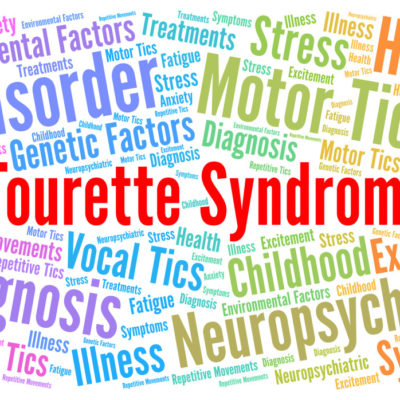
(42)
Author: Rawan Osama Abu Nsair
Editor: Hala Qaryouti
Introduction
Attention-Deficit Hyperactivity Disorder (ADHD) is one of the most common neurodevelopmental disorders, first described by Sir Alexander Crichton, a Scottish physician, through a case with symptoms similar to ADHD in 1798. The disorder’s name was changed several times throughout the years to finally land on ADHD.
As the name suggests, ADHD patients have mainly inattentiveness and hyperactivity symptoms. It is usually of childhood-onset, and can persist to adulthood, although symptoms and severity may fluctuate. Since it affects a patients’ daily life and interferes with their work/school performance and social communication, diagnosis should be made and treatment started as soon as possible.
Epidemiology
ADHD has a worldwide pooled prevalence of around 7.2% (1). A US study conducted in 2016 revealed that almost 9.4% (6.1 million) of US children aged 2-17 years had ever received an ADHD diagnosis. (2).
In comparison to the general US population, black Americans have been shown to have higher rates of ADHD (3). Using 2011 National Survey of Children’s Health (NSCH) data for children aged 4-17 years, a study found that boys are more likely to receive a diagnosis of ADHD (4), with 1 in 5 high school boys diagnosed compared to only 1 in 11 girls in the same time period (4). Another study calculated a male: female ratio of 2.28:1 with a prevalence of 9.2% (5). Geographically, according to a Systematic Review and Meta-analysis, ADHD is more common in the Middle East compared to North America (1).
Etiology and Pathogenesis
The exact etiology of ADHD is still not well-understood, but studies have confirmed that both genetic and environmental factors play an important role in its development.
In a twin study, ADHD carried a high heritability rate (88%) across the life span (6), whereas the Genome-Wide Association Studies (GWASs), which focused on single nucleotide polymorphisms (SNPs), estimated a heritability of 22% (7).
GWASs have also identified 12 genome-wide significant risk loci, many of which are located in or around genes involved in neurodevelopmental processes that could be related to ADHD, such as FOXP2 (Forkhead box protein P2), SORCS3 (Sortilin Related VPS10 Domain Containing Receptor 3), and DUSP6 (Dual Specificity Phosphatase 6) (7).
ADHD can co-occur with other psychiatric disorders like bipolar disorder (8) and autism-spectrum disorders (9) due to genetic overlap.
Research has also identified environmental factors associated with ADHD, most of which are prenatal such as maternal pre-pregnancy obesity/ overweight, pre-eclampsia, hypertension, as well as smoking and acetaminophen use during pregnancy (10). It is worth mentioning that if fetal acetaminophen exposure happens in the third trimester or if there was a long duration of exposure, the risk of developing ADHD increases further (11). In addition, childhood atopic diseases like asthma and eczema are also associated with ADHD development (10). The effect of these environmental factors could be exerted by gene-environment interaction (12). However, none of these associations has proven a causal relationship.
ADHD patients have mainly executive function deficits related to deficits in noradrenergic neurotransmission (13), as high levels of catecholamines could disturb cognitive functions in the prefrontal cortex (14). For example, disruption of cortico-striato-thalamo-cortical circuits affects attention and executive functions in ADHD patients (15). Dopaminergic signaling could also be disrupted in these patients (13).
Changes in biochemical regulation in the brain could be accompanied by neuroimaging alterations. Volume reduction is the main alteration that could be noted in the prefrontal cortex, basal ganglia (striatum), dorsal anterior cingulate cortex, the splenium of the corpus callosum, and the cerebellum (especially the posterior inferior vermis) (16). In addition, neuroimaging could reveal cortical thickness reduction (most prominent in prefrontal regions which control cognitive processes). Also noticed is a delay in brain maturation (i.e. delay in attaining peak cerebrum thickness), with the median age by which 50% of cortical areas attaining peak thickness in ADHD patients being 10.5 years compared to 7.5 years for healthy peers (17).
DSM-5 Diagnostic Criteria for ADHD (18)
A. A persistent pattern of inattention and/or hyperactivity that interferes with individual’s development or functioning, characterized by (1) and/or (2):
1. Inattention: at least 6 of the following symptoms (only 5 are required if 17 years or older) present for at least 6 months, and affecting social, occupational, or academic life.
a. Failure to pay close attention to detail or making careless mistakes.
b. Difficulty maintaining attention in tasks or activities (e.g., difficulty remaining focused during lectures/ conversations).
c. Seems not listening when someone is talking to them directly.
d. Inability to follow instructions and complete tasks
e. Organizing and managing difficulties, inability to meet deadlines (e.g., difficulty managing sequential tasks; difficulty maintaining order; messy, disorganized work; poor time management; fails to meet deadlines).
f. Tends to stay away from any activity that requires continuous mental effort and concentration.
g. Frequent loss of tools necessary for task completion like pencils, keys, eyeglasses, etc.
h. Distracted easily by external distractions or odd thoughts for older adolescents
i. Often forgetful in daily activities (e.g., chores, errands; for older adolescents and adults: returning calls, keeping appointments, paying bills).
2. Hyperactivity: at least 6 of the following symptoms (only 5 required if 17 years or older) present for 6 months or more and affecting social, occupational, or academic life.
a. Squirms or makes small movements by hands when sitting.
b. Avoids occasions that require staying seated in place (e.g., leave their place in the classroom/ office).
c. Often runs or climbs in situations where it is inappropriate. (In adolescents or adults, may be limited to restlessness.)
d. Inability to engage in quiet playing activities.
e. Restless, most of the time “on the go” (e.g., unable to be or uncomfortable being still for a long time), and difficult to keep up with in public.
f. Talking excessively.
g. Tends to give answers before the question has been completed.
h. Inability to wait for turn.
i. Tend to interrupt others while talking or doing something (e.g., butts into conversations, games, or activities; may start using people’s belongings without asking for permission; for adolescents and adults, may interrupt or take over what others are doing).
B. Most of the symptoms above have started before the age of 12.
C. Many symptoms of the above are present in 2 settings at least (home, school…).
D. These symptoms affect negatively the person’s social, educational, or occupational life.
E. The symptoms do not occur due to schizophrenia/ another psychotic disorder/ mood disorder/ anxiety disorder, dissociative disorder/ personality disorder/ substance withdrawal or intoxication).
• Specify one of the 3 variants of ADHD:
1. Predominantly inattentive: inattention criterion (A1) is met but hyperactivity-impulsivity criterion (A2) is not met for the last 6 months.
2. Predominantly hyperactive: criterion A2 is met but Criterion A1 is not met for the past 6 months.
3. Combined: both criteria are met for the last 6 months.
• Specify if in partial remission: full criteria were met previously, fewer than the full criteria have been met for the last 6 months, but symptoms still cause functional impairment.
• Specify current severity:
1. Mild: Few, if any, symptoms in excess of those required to make the diagnosis are present. Symptoms result in minor impairments in social or occupational functioning.
2. Moderate: shows symptoms or functional impairment between “mild” and “severe”.
3. Severe: Many symptoms in excess of those required to make the diagnosis, or several symptoms that are particularly severe are present, or the symptoms result in significant impairment in social or occupational functioning.
Differential Diagnoses
ADHD symptoms can overlap with symptoms of other psychiatric disorders. This makes it difficult to establish the diagnosis. Moreover, ADHD is considered a heterogeneous disorder, which might be due to high rates of comorbidity with other childhood-onset disorders (20). Identifying comorbid disorders affects the management plan.
Common comorbid disorders:
• Autism spectrum disorders.
• Learning disorders.
• Mood disorders, like depression and bipolar disorder.
• Anxiety.
• Disruptive behavior disorders.
• Substance abuse.
Quality of Life
Children with ADHD experience functioning impairment, mainly in social and academic life (12). They are at a higher risk of school failure, low self-esteem, social rejection by peers, delinquency (12), and anxiety (21). Sleep deficit is also common among these patients (22). Socially, they struggle with relationships, either with their families (23) or peers (24).
As they grow up, patients experience reduced occupational functioning, increased risk of unemployment (12), and emotional dysregulation (25). Inattentive and hyperactive symptoms make road traffic accidents more common among them (12).
In general, ADHD is associated with a significant reduction in the quality of life (22), although medical treatment- especially stimulants and atomoxetine- help in reducing functional impairment (12).
Adult ADHD
As aforementioned, ADHD tends to start in childhood and persists into adulthood. However, recent research suggests that a high proportion of patients show adulthood-onset of ADHD symptoms and consequent impairment (26). This condition fails to meet DSM-5 criteria which presume that many of the symptoms have started before the age of 12.
Adult ADHD also differs from childhood-onset ADHD in its lower prevalence ranging between 1% (27) and 3% (26), and its balance in male to female ratio (26,28). The predominantly inattentive subtype is the most common among adults and accounts for 47% of cases (29).
Presentation in adults is slightly different from children and adolescents as hyperactivity is usually expressed by a feeling of restlessness, talkativeness, and excessive fidgeting in settings like lectures and meetings. Incapability of holding a job or maintaining personal relationships and impatience are considered impulsivity symptoms in adults. Inattentiveness is expressed as decision-making problems, feeling bored, and being easily distracted. (30)
Both adult and childhood-onset ADHD are associated with comorbidities such as mood and anxiety disorders, antisocial personality disorder, and substance abuse disorder (28). ADHD affects adults’ quality of life, who are less likely to enroll in college (31) and more likely to experience employment difficulties (32). In addition, patients find it difficult to maintain relationships due to emotional excitability (29).
Treatment
1. Pharmacologic Approach:
A. Stimulants such as methylphenidate and amphetamine are the first choice treatment for ADHD (19).
Methylphenidate and amphetamine are also equally effective (19). They stimulate central nervous system mainly through increasing the levels of extracellular dopamine and norepinephrine by blocking transporters to prevent their reuptake.
Insomnia, anorexia, dysphoria, and irritability are the main side effects of stimulants (20).
B. Non-stimulants:
i. Atomoxetine: a selective norepinephrine reuptake inhibitor. It is generally less effective than stimulants on hyperactivity symptoms (19).
ii. Long-acting alpha2-adrenergic agonists: mainly clonidine and guanfacine.
For patients with comorbidities, and those who do not respond to monotherapy; a combination can be used (12). This is usually a stimulant combined with atomoxetine or an alpha2- adrenergic agonist (21).
2. Non-pharmacological treatment is recommended to be used in combination with the medications through a multimodal approach (22).
A. Behavioral interventions: parent training, school-focused interventions (12).
B. Neurocognitive interventions: mainly neurofeedback and attentional and executive functioning training with interactive computer games (24).
C. Dietary interventions: mainly free fatty acid supplementation and artificial food colors extraction (23).
Prognosis
ADHD is a chronic disease, with around 79% of children and adolescents affected having persistent symptoms into adulthood (25). Although hyperactive and impulsive symptoms tend to regress, inattentive symptoms usually continue (26) and emotional liability tends to be more prominent during adulthood (27). Since the disease is of a persistent nature, it is important to provide a smooth transition from child to adult mental health services (28).
References...





